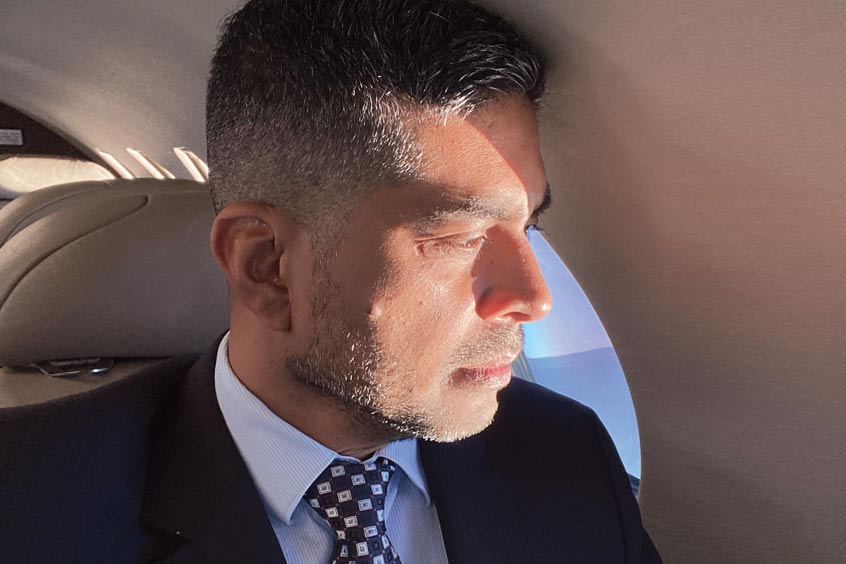ACE 2026 - The home of global charter.
 The bimonthly news publication for aviation professionals.
The bimonthly news publication for aviation professionals.

Public pressure is mounting on the aviation industry to take immediate action toward reducing its environmental footprint. While other industries generate larger sums of carbon (aviation is responsible for roughly two per cent of global CO2 emissions), aviation is a more visible segment. The commodities sector, for instance, is responsible for a much higher carbon footprint, but is not so much in the public eye.
Electrification is a feasible mid-term solution: it has the potential to significantly reduce emissions, electric-powered aircraft produce zero emissions during flight, but the technology is still in its early stages and there are many challenges to overcome until it is truly a viable alternative to fossil fuel power. One of those challenges is having a consistent end result – did you know that lithium mining causes environmental damage, and lithium batteries are being disposed of in landfills, which causes the toxins to seep into our drinking water?
So while there is is a huge push to become green, the technology isn't sufficiently advanced, and carbon credits and planting trees are not the solution. As for electric vehicles (EVs), the electric grids themselves burn coal, which somewhat defeats the purpose.
Airways need to be opened up to eVTOL and eCTOL aircraft. Electric cars have faced the same roadblock; there needs to be more chargers, but the chargers themselves have a sizeable carbon footprint. Even if manufacturers are ready, it is questionable whether the airports and vertiports are ready; conventional airports are maxed out with failing infrastructure, and there have been a series of close calls at busy airports involving airliners. How do we envision the accommodation of new aircraft within the same tired, old infrastructure? There is certainly plenty of food for thought for those leading change.
AI can be used to improve safety, efficiency and customer experience, and not just by creating customer service chatbots or assisting travel planning, but by improving operational safety. AI-powered systems can analyse massive amounts of data in real time, identifying potential risks and providing pilots with critical information to make informed decisions, while also predicting and detecting potential mechanical issues before they become severe. This would facilitate preventive maintenance and reduce the risk of in-flight emergencies, and it can help with supply chain when it comes to spare parts and on the ground (AOG) events.
AI can improve flight efficiency and route optimisation, by considering factors such as weather conditions, airspace restrictions and fuel efficiency resulting in more direct routes plus reduced flight times and fuel consumption. In other words, a more efficient operation with lower costs.
AI can also impact the passenger experience. Private jet passengers want high-speed in-flight connectivity, and by optimising the performance of satellite communication systems, AI ensures a reliable and seamless connection throughout the flight. Passengers can stay connected to their businesses and personal lives, enhancing productivity and satisfaction during the journey.
It can assist pilots in tasks such as landing in challenging conditions or managing complex flight systems, reducing workload and human error. In a nutshell, by enhancing pilot decision-making and performance, AI will play a crucial role in improving safety and efficiency in aviation.
Finally, AI can revolutionise quoting and fleet optimisation in the private jet sector. By analysing historical data, market trends and customer preferences, it can accurately predict demand and match it with fleet availability. This allows operators to optimise aircraft utilisation, reduce operational costs and provide more competitive pricing to clients. Additionally, AI-driven algorithms can evaluate various factors such as aircraft performance, fuel consumption and maintenance costs, enabling operators to make informed decisions about fleet composition and expansion.
Electrification, emissions reduction and AI are the future of aviation, but Singh says the big question is whether the industry is prepared to leverage this new technology for change. It is not enough to talk about it and draw up designs for beautiful electric aircraft, there needs to be action. There would be a huge gap with stakeholder expectations if the industry were not to pursue green goals, but he believes it would be equally detrimental to not set realistic expectations for the industry and all its moving pieces.